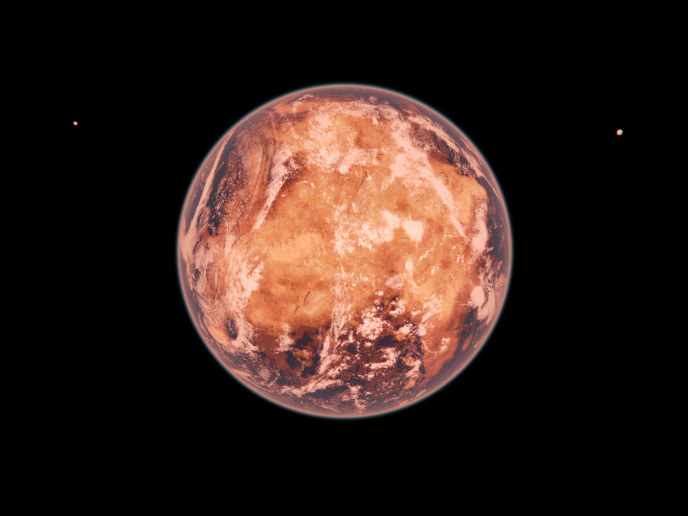How do we know distant planets are Earth-like?
“Nobody really has the same expectations or criteria for a planet to be what you call Earth-like,” says Leconte. For some, a planet just being rocky is enough. This means a solid surface, in contrast to gas giants like Jupiter or Saturn. To work this out, scientists first measure the planet’s radius as it passes in front of a star, which allows them to estimate its size. To work out its mass, they look at how much the planet’s orbit causes the star to ‘wiggle’. Using these calculations, they can then work out the planet’s density, sorting solid worlds from gassy blobs. “But you still have rocky planets at 2000 ºC, where you actually melt the surface,” adds Leconte. These so-called lava ocean planets are not exactly liveable. “Not for us anyway.” The next step is to see whether the planet is temperate, with a climate mild enough to support liquid water on the surface. This is revealed by the amount of light a planet receives, along with its orbit. This still isn’t enough for some scientists to deem a planet Earth-like, however. They want to know if there is a suitable atmosphere. For this, they look again at the planet transiting in front of a star. As some gases block certain wavelengths of light, the incoming light around a planet will be imprinted with the atmospheric signature. The hardest part is to find out whether there is actually liquid water at the surface. The density of a planet could give clues, but the calculations need to be extremely precise. This is because even on ocean planets like ours, where water covers 71 %, it makes up a tiny fraction of the overall mass. To put it another way: Earth’s radius is around 6 000 km, while the oceans are, on average, around 3.5 km deep. Yet with the above knowledge in hand, everyone would be satisfied. “Unless you want to actually see the aliens down there,” says Leconte, “when people think of Earth-like, having a rocky planet that is temperate, that has an atmosphere and has liquid water, we're there.”
Examining exoplanets
In the EU-funded WHIPLASH project, Leconte developed a new suite of tools and techniques to analyse the atmospheres of distant planets. Through the project, WHIPLASH created a new framework to understand the physics and composition of exo-atmospheres, based on an innovative 3D planetary atmosphere simulator. With the recent launch of the James Webb Space Telescope (JWST) and the European Space Agency’s Ariel mission set for later this decade, scientists will have ultra-high-resolution characteristics of distant planets to investigate. This could help reveal more about exoplanets around TRAPPIST-1, a star just 40 light years from Earth, including the presence of liquid water at the surface.
Mission to a new Earth?
The closest star system to our own centres around the red dwarf star Proxima Centauri. And at just over four light years from Earth, Proxima Centauri b is our closest Earth-like exoplanet. So how soon can we expect a mission to go there? Even travelling at 10 % of the speed of light, the journey would still take 40 years. “There are some crazy ideas on how to send very light probes that would be pushed by a laser,” remarks Leconte. “But even then, I think it’s just science fiction. So it's not any time soon, I would say.” Click here to find out more about Jérémy Leconte’s research: New tools for taking a closer look at exoplanets
Keywords
WHIPLASH, exoplanet, Earth, distant, galaxies, examining, atmosphere



